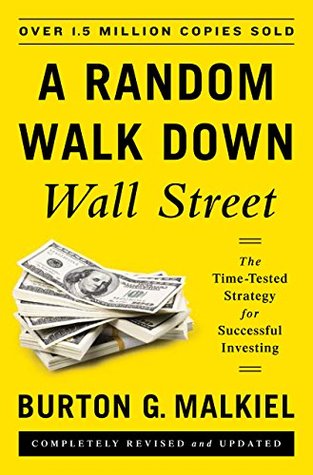More on this book
Community
Kindle Notes & Highlights
interest rates rose substantially, preceding the great stock-market crash
Rule 4: A rational investor should pay a higher price for a share, other things equal, the lower the interest rates.
value (and its price-earnings multiple) will be higher the larger the company’s growth rate and the longer its duration; the larger the dividend payout for the firm; the less risky the company’s stock; and the lower the general level of interest rates.
Caveat 1: Expectations about the future cannot be proven in the present.
Caveat 2: Precise figures cannot be calculated from undetermined data.
There is always some combination of growth rate and growth period that will produce any specific price.
Caveat 3: What’s growth for the goose is not always growth for the gander.
information and analysis may be incorrect.
estimate of “value” may be faulty.
market may not correct its “mistake,” and the stock price may not converge...
This highlight has been truncated due to consecutive passage length restrictions.
unable to translate correct facts into accurate estimates of future earnings.
information available to the security analyst may already be reflected accurately by the market.
average multiple change rapidly for stocks in general, but so can the premium assigned to growth.
use a combination of techniques
Rule 1: Buy only companies that are expected to have above-average earnings growth for five or more years.
double benefit—both the earnings and the multiple may increase.
Rule 2: Never pay more for a stock than its firm foundation of value.
earnings multiple for the market as a whole is a helpful benchmark. Growth stocks selling at multiples in line with or not very much above this multiple often represent good value.
calculated each potential stock’s P/E-to-growth ratio (or PEG ratio)
Beware of very high multiple stocks in which future growth is already discounted.
Rule 3: Look for stocks whose stories of anticipated growth are of the kind on which investors can build castles in the air.
The basic premise is that there are repeatable patterns in space and time.
results reveal that past movements in stock prices cannot be used reliably to foretell future movements.
any investor who pays transactions costs and taxes cannot benefit from it.
What are often called “persistent patterns” in the stock market occur no more frequently than the runs of luck in the fortunes of any gambler.
on the dependability or duration of the current uptrend. Yes, history does tend to repeat itself in the stock market, but in an infinitely surprising variety of ways that confound any attempts to profit from a knowledge of past price patterns.
a random walk. The next move on the chart is completely unpredictable on the basis of what has happened before.
stock market does not conform perfectly to the mathematician’s ideal of the complete independence of present price movements from those in the past.
some evidence of short-term momentum, there has been a long-run uptrend in most averages of stock prices
“weak” form of the random-walk hypothesis goes as follows: The history of stock price movements contains no useful information that will enable an investor consistently to outperform a buy-and-hold strategy in managing a portfolio.
In the stock-market experiments, the placebo with which the technical strategies are compared is the buy-and-hold strategy.
the filter method lies behind the popular “stop-loss”
The basic Dow principle implies a strategy of buying when the market goes higher than the last peak and selling when it sinks through the preceding valley.
In the relative-strength system, an investor buys and holds those stocks that are acting well, that is, outperforming the general market indexes.
Price-volume systems suggest that when a stock (or the general market) rises on large or increasing volume, there is an unsatisfied excess of buying interest and the stock will continue its rise.
performance after transactions costs would have been no better than that achieved with a buy-and-hold strategy.
Human nature likes order; people find it hard to accept the notion of randomness.
observers are likely to overestimate the correlation between successive shots. When events sometimes do come in clusters and streaks, people refuse to believe that they are random,
it’s sometimes possible to correlate two completely unrelated events.
the indicator most closely correlated with the S&P 500 Index is the volume of butter production in Bangladesh.
if one keeps predicting a market decline (or rise) one is bound to be correct at some time.
If enough different criteria for selecting stocks are tried, one will eventually be found that selects the best ones of that period. The real problem is, of course, whether the scheme works in a different time period.
once such a regularity is known to market participants, people will act in a way that prevents it from happening in the future.†
Any successful technical scheme must ultimately be self-defeating.
market timers risk missing the infrequent large sprints that are the big contributors to performance.
no reliable pattern can be discerned from past records to aid the analyst in predicting future growth.
Not one industry is easy to predict. Moreover, no analysts proved consistently superior to the others.
five factors that help explain why security analysts have such difficulty in predicting the future. These are (1) the influence of random events, (2) the production of dubious reported earnings through “creative” accounting procedures, (3) errors made by the analysts themselves, (4) the loss of the best analysts to the sales desk or to portfolio management, and (5) the conflicts of interest facing securities analysts at firms
Pro forma earnings are often called “earnings before all the bad stuff,” and give firms license to exclude any expenses they deem to be “special,” “extraordinary,” and “non-recurring.”
“Worldly wisdom teaches that it is better for reputation to fail conventionally than to succeed unconventionally.”


